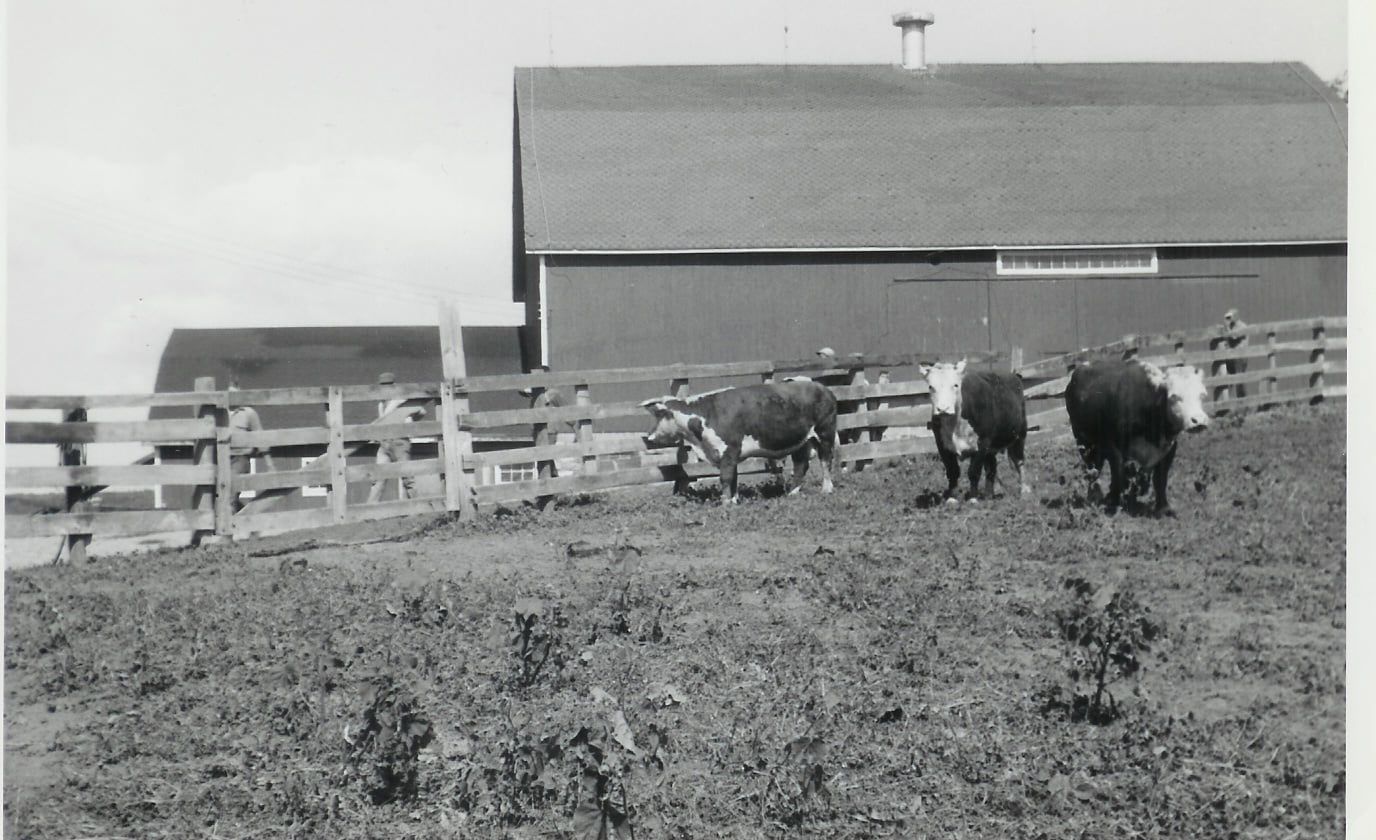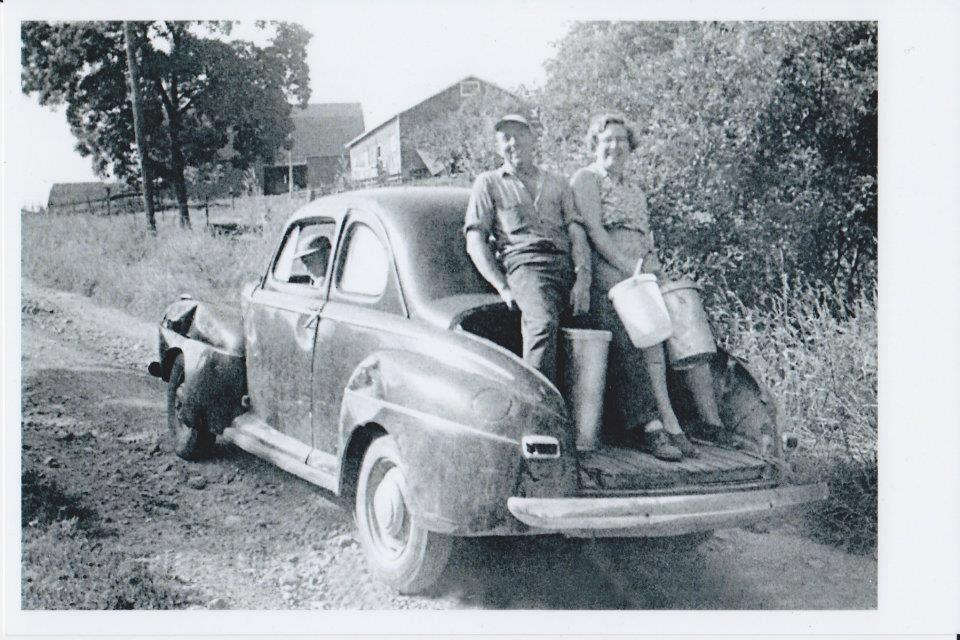Every barn has one, some have two. What I am describing is a barn gutter, a place for cows to dispose of their digested hay or grain. I have no idea who set the distance from the cow’s mouth to the back side, I am almost positive some mathematicians spent hours studying this problem. Our barn had one gutter, my Uncle Leon’s (Dano) barn had two and so did Matti Pananen’s barn.
The barn gutters were designed and built to precisely fit the length of an average cow – shoulder to tail and were about a foot wide. Usually built long enough to fit about 20 cows – side by side as they lined up in the barn to be milked and fed. Constant cleaning was needed because of the continuous discard from the cows. A special shovel to clean the gutter was designed with a heavy steel blade about a foot wide and a strong wooden handle. In winter we rarely let the cows out of the barn. The ground was usually frozen, and any snow was dangerously slippery that could cause a cow to fall. If a cow fell, the risk of breaking a leg or hip was high because of their split hooves – they have no traction on a slippery surface. So, during the winter months, the milk cows stayed inside the barn, just eating and discarding their food in the gutter.

Our barn was also equipped with a gutter trolley that had a running single track that was fastened to the barn beams that supported the hay loft in our barn. The trolley was about the size of a 5-gallon drum, split lengthwise. The trolley was supported by two wheels, one wheel on each end that were grooved to fit the track as it moved along the area from the gutter to the stone wall. On one end there was a chain hoist that pulled a laden bucket about 3 or 4 feet from the stable floor, when released a stop on the chain bucket dropped to the floor about two feet from the gutter. At this level it was only a short lift from the gutter to the half round bucket that you filled with the mess the cows had left on the gutter. Five or six shovels full would fill the trolly bucket and a few pulls on the chain hoist with a loud click – away to the manure heap about a 100 feet from the barn. By February, the heap would grow to be a mountain of manure about 10 feet high and 20 feet wide.
The floor of the barn was solid concrete and we used straw to spread on the hard, cold floor to soften the surface for the cows. Water for the cows was kept in cast iron troughs, each trough served two cows and the water never froze. The body heat from 20 cows and a few horses kept the temperature inside the barn stable enough to stay above freezing. Our heavy coats could even be discarded and hung up once inside the barn and put back on before going back outside. Coveralls – a one piece suit that went over top of our regular clothes - were the clothes of barn labor and were removed before entering the house. We never entered our mother’s house dressed in barn clothes – it was a strict rule.

The winters were long, grueling and cold. We could hardly wait for the arrival of spring each year. The spring brought warmer temperatures, fresh green grass and new life to the farm with the birth of the calves.
One negative with the arrival of spring, we had to endure the dreadful biting flies again. But, we mostly looked forward to things to come - muskrat trapping, bullhead fishing, pike netting and an ice-free river.
Each winter morning brought a full barn gutter to clean, hungry cattle to feed, swollen udders to milk and the anticipation of the new calves to be born soon.
"Please spring be a little early this year," was my prayer.
By Manley L. Rusho
Manley Rusho was born on Grindstone Island nine+ decades ago. Back in 2021, Manley started sharing his memories with TI Life. (Manley Rusho articles) This Editor and his many friends send our very best throughout the year but as we start summer 2024 we send a special hug - Manley lost one of his close Grindstone Island friends, with the death of Zell Steever in April. He told his granddaughter how much that man meant to him as they had coffee most summer mornings together.
We know Manley has moved south and is now in a residence where we are sure his fellow mates are enjoying his stories as much as we do. As always, we thank you sir, most sincerely, for sharing - "as the life and times on Grindstone Island are special and should never be forgotten."
Posted in: Volume 19, Issue 6, June 2024, History, Places, People, Current
Please click here if you are unable to post your comment.
